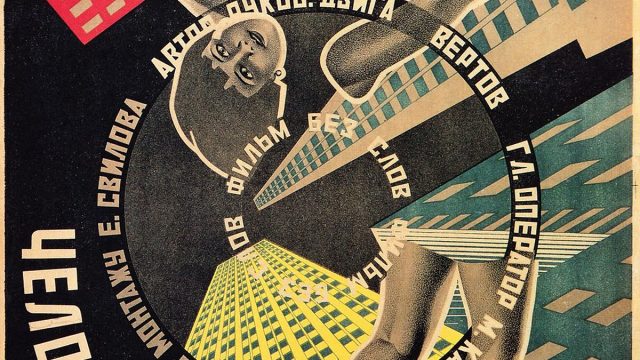Sight & Sound Voyage Entry #33
Placement On Sight & Sound Top 50 Movies List: #8
In the early days of cinema, everything you could with a camera was revolutionary. The works of folks like Eadweard Muybridge, Thomas Edison and the Lumiere Brothers may seem quaint now, but at the time, they were changing how art could be made forever. Film was such a new artform at that point that the very act of filming anything was rightly considered something tantamount to an act of Biblical proportions. By the time 1929 rolled around, cinema had advanced notably since the 1890-1900 era, but there was still much to be done and experimented with when it came to the art of filmmaking. There was still plenty of artistic terrains yet to be charted in the realm of cinema.
For Dziga Vertov, a Soviet director, he intended to push the boundaries of cinema and create a motion picture that channeled the spirit of those early experimental avenues of filmmaking while also shattering the fourth wall in the process. The result was Man With A Movie Camera, a 1929 feature film that has no real narrative to its name beyond six vignettes that show various perspectives of everyday life in his home country, such as coal miners hard at work in their underground domain, people spending the day at the beach or human beings moving across a busy street by way of walking or taking a horse and buggy.
All of these naturalistic tales (told in an unscripted manner, with Vertov basically just letting the camera roll as he captures actual slices of human life) are told through the prism of a framing device that opens and closes the movie wherein audiences pour into a movie theater to watch a motion picture on the big screen. We also cut away to a man hard at work editing and trimming the various film reels the footage in Man With A Movie Camera is captured on, another clear as day signifier of Vertov’s burning passion to not just break but obliterate the fourth wall with this particular avant-garde effort.
Dziga Vertov, it turns out, is a mighty capable craftsman when it comes to delivering visual-oriented cinema that eschews narrative so that he can fiddle around with his camera amidst the normal Russian populace. Running at only 68 minutes in length, the obviously unusual proceedings don’t outlast their welcome and the distinctively mesmeric rhythm in which editor Yelizaveta Svilova compiles the footage together has this magnetic quality to it, even the most mundane acts depicted in the movie take on a more mesmerizing quality with the way they’re edited together in Man With A Movie Camera.
Also helping to keep one’s attention fixated on the movie itself is that the entire film sometimes goes down intriguing tonal directions without a hint of warning. For instance, the second segment closes out with the footage freezing while incredibly ominous music plays in the background. A creepy vibe suddenly enters a feature that had previously relied on a calmer naturalistic atmosphere and the dichotomy between those tonal elements creates this captivating quality that had me wondering just what the hell other tricks Dziga Vertov had up his sleeve. There’s really no limit to what he’ll do next in terms of what aspect of everyday life he’ll portray next or what editing trickery his movie will fully throw itself into next.
There’s some ominously uneasy vibes throughout certain parts of the rest of the movie, but even that specific mood isn’t omnipresent in a way that wears out its welcome. Instead, Man With A Movie Camera goes for whatever kind of mood best suits the images it’s portraying, images that are, by the by, gloriously depicted by way of cinematographer Mikhail Kaufman, who makes plenty of gloriously composed images out of more mundane situations. Ambition and craftsmanship most certainly collide in the transfixing Man With A Movie Camera, a parable about a man who dared to push the boundaries of cinema and created an avant-garde masterpiece in the process.

